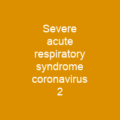Understanding the Intricacies of Human Metapneumovirus (HMPV)
Imagine a tiny, invisible warrior, HMPV, waging war on our respiratory system. This virus is part of the family Pneumoviridae and shares many traits with its cousin RSV, but it has its own unique story to tell.
The Discovery and Spread of HMPV
First isolated in 2001 in the Netherlands, this virus quickly became a household name among healthcare professionals. It’s now the second most common cause of acute respiratory tract illness in children under five worldwide. But how does it spread so effectively? Think of it like a stealthy spy, using secretions from coughing and sneezing to infiltrate our bodies.
Who Does HMPV Target?
The virus doesn’t discriminate; it can affect anyone, but some groups are more vulnerable. Premature infants, immunocompromised individuals, and older adults over 65 years old face a higher risk of severe disease and hospitalization. For those with asthma or chronic obstructive pulmonary disease (COPD), HMPV might be even more dangerous.
Genetic Lineages and Outbreaks
HMPV has two main genetic lineages, A and B, each containing subgroups. These lineages are like branches on a family tree, showing how the virus has evolved over time. Outbreaks in long-term care facilities can be devastating, with fatalities reported due to severe cases of HMPV.
The Replication Cycle
Understanding how HMPV replicates is crucial for developing treatments. The virus attaches itself to epithelial cells using the G protein, fuses with host membranes via the F protein, and releases its ribonucleoprotein into the cytoplasm. From there, it transcribes its negative-sense RNA genome using proteins N, P, and L before enveloping viral glycoproteins through the Golgi apparatus.
Diagnosis and Detection
Detecting HMPV can be tricky but not impossible. Methods like reverse-transcriptase polymerase chain reaction (RT-PCR), immunofluorescent-antibody test, and immunofluorescence staining with monoclonal antibodies are commonly used. These tests help identify the virus in airway epithelial cells, leading to a better understanding of its spread.
Prevention and Treatment
The distribution and spread of HMPV are complex, making prevention challenging. Touching objects contaminated by secretions from coughing or sneezing can lead to infection. As for treatment, there’s no specific antiviral therapy yet, but promising developments include a live recombinant human parainfluenza virus that induces hMPV-specific antibodies and can protect experimental animals.
Conclusion
The emergence of HMPV between 1875-1889 and its divergence from avian metapneumovirus around 1800 tells us a lot about the history and evolution of this virus. While we haven’t found a cure or vaccine yet, ongoing research offers hope for better prevention and treatment in the future.

You want to know more about Human metapneumovirus?
This page is based on the article Human metapneumovirus published in Wikipedia (retrieved on January 16, 2025) and was automatically summarized using artificial intelligence.





